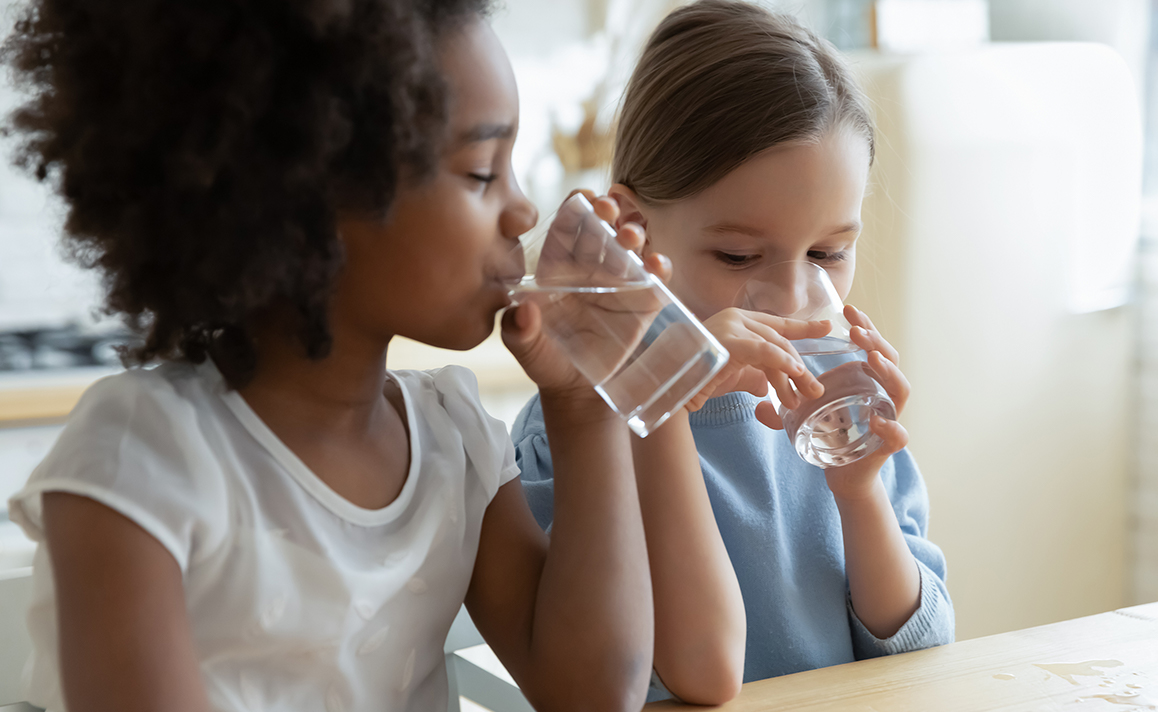LeadCare Illinois has paused processing lead-in-water test kits while we wait for a new round of funding for the program to be released. Sign up for our waiting list, and we will notify you as soon as we resume processing test kits.
Illinois Lead in Water Testing Rules
You cannot see, taste, or smell lead in drinking water

To protect Illinois children from possible exposure to lead in water, the State of Illinois passed a law requiring schools and child care facilities to test their water for lead.
Who is required to test?
Department of Children and Family Services (DCFS) requires all licensed day care homes, group day care homes and centers serving children under six years of age and housed in a building constructed on or before January 1, 2000 to test all cooking and drinking water sources used for child care operations for lead.
All licensed facilities must submit a survey to their DCFS licensing representative that includes the construction date of the building in which the facility operates. A copy of the building survey can be found here.
Regardless of whether a facility is required to test under the rules, all DCFS-licensed child care facilities can test their water for free through the LeadCare Illinois program.
What are the testing requirements?
All drinking and cooking water sources that are used for child care operations must be sampled. Faucets/fixtures that may be sampled include, but are not limited to, kitchen sinks, bathroom sinks, classroom sinks, drinking fountains, bubblers, and refrigerator or freezer water/ice dispensers. DCFS does not expect providers to submit samples from bathtubs, showers, or outside faucets unless they are routinely used as a source of drinking and cooking water.
Samples must be analyzed by the Illinois Environmental Protection Agency (IEPA) lab or an IEPA-certified lab. All samples that are submitted through LeadCare Illinois will be analyzed by the IEPA lab at no cost to the child care facility.
After initial testing is completed, retesting may be required under the following scenarios:
- If lead is found during initial testing. In this case, retesting is required no later than six months after the completion of the mitigation plan AND one year after the completion of the mitigation plan. See mitigation requirements below for more details.
- After a change to the water profile, which means a change to the building's water heater, source of water, water supply, or change of address. For example, if the water heater or service line is replaced in the building, retesting is required.
What are the requirements if lead is present?
DCFS requires that a mitigation plan is developed and implemented for all sources of drinking and cooking water that contain lead at or above 2.01 parts per billion (ppb). DCFS defines mitigation as activities or processes undertaken to reduce the level of lead in water below 2.01 ppb.
Licensed facilities must develop and submit a written mitigation plan that includes the following:
- Water sources testing at or above 2.01 ppb;
- Interim (immediate) strategies the facility will take to ensure a safe water supply during mitigation;
- Planned mitigation strategies licensee will take to reduce lead levels below 2.01 ppb at each fixture;
- Planned start and completion dates of mitigation plan; and
- Dates that retesting will be conducted to ensure mitigation actions reduce lead levels below 2.01 ppb. DCFS requires two rounds of retesting: one no later than six months after completing the mitigation plan, and the second no later than one year after completing the mitigation plan.
A mitigation plan is required until permanent mitigation actions are implemented and two consecutive tests show lead levels below 2.01 ppb.
What are the training requirements?
All licensed child care facilities must complete a lead safety training and submit a certificate of completion to their DCFS licensing representative. The training should consist of instruction in the following topics:
- Impact of lead exposure
- Mitigation strategies for test results of 2.01 ppb or above
What are the reporting requirements?
Test Results: Licensed facilities must submit their test results (at, above, or below 2.01 ppb) to the local DCFS licensing office within 120 days of receiving results. Licensed facilities must also post all test results in a visible location in their facility.
Mitigation Plan: If required to create one, a mitigation plan must be shared with parents and submitted to the local DCFS licensing office within 120 days of receiving test results.
Training: All licensed facilities must submit a certificate of completion of a lead safety training to the local DCFS licensing office.